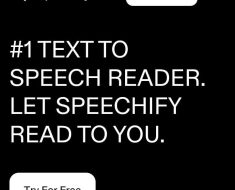
Email continues to be a vital component of both personal and professional communication in our fast-paced, globally connected world. The ability to communicate effectively via email is useful whether you’re interacting with friends and family or navigating the professional world. In this blog post, we will explore the recipe of creating eye-catching emails, perfecting inbox management, and developing deep online relationships in this extensive course.
Email Writing Fundamentals
The foundations of creating an engaging message are the first step towards good email communication. Every component, from the subject line to the concluding remarks, is vital to effectively and succinctly expressing your ideas.
Mastery of Subject Line:It takes both art and science to create a subject line that grabs readers’ attention. Make sure your subject line accurately summarises the email’s content before anything else. When expressing urgency or piqueing attention, use succinct language that avoids using clickbait. A strong subject line creates the ideal environment for your content to be seen favourably.
Text-Based Body Language:Emails don’t have the same visual or audible signals as in-person communication, so it’s important to use your writing style to express your feelings and intentions. Depending on the situation, use punctuation, sentence structure, and well-selected words to convey urgency, professionalism, or kindness. Try out various strategies to get the ideal balance for your audience.
The Influence of Courtesies:In the digital sphere, where in-person interactions are rare, politeness becomes even more important. To create a courteous and upbeat atmosphere, practise saying hello, expressing thanks, and using polite language. Not only does a polite email demonstrate professionalism, but it also helps to foster goodwill.
Expert Email Composition Techniques
Modifying Your Tone:One thing that distinguishes skilled email communicators is their ability to recognise the subtleties of your audience and modify their tone accordingly. Consider the relationship the recipient has with you, the communication’s goal, and the larger context when you customise your writing style. Whether you’re speaking with a friend, customer, or coworker, choosing the appropriate tone will guarantee that your message is understood.
Conciseness and Clarity:It’s critical to become proficient in the art of brief and clear communication in this day and age of short attention spans. Put ideas in a logical order, deliver data in an orderly fashion, and cut out superfluous detail. To make sure that your message can be quickly and readily comprehended, try to be brief without losing clarity.
Powerful Instigations for Action:Each email ought to have a goal, and a well-written call to action (CTA) directs the reader to do the next action. Make your CTA clear and persuasive, regardless of whether you’re looking for a specific action, a reaction, or cooperation. When it makes sense, give a deadline and use language that is action-oriented to promote timely replies and involvement.
Strategies for Managing Inboxes
Getting Your Email In Order:Keeping your inbox neat is crucial to effective email management. To automate the sorting process, create folders for each category of email, label them accordingly, and apply filters. Review and archive old emails on a regular basis to avoid cluttering your inbox. Keeping your email organised not only saves time but also makes it easier to find critical communications. Using an encrypted email account is also recommended to keep your communications protected from third parties.
Setting and Fulfilling Priorities:Not every email needs to be read with the same diligence. Create a mechanism to rank emails according to their importance and urgency. Time-sensitive letters should be answered right away, and you should develop a schedule for handling less urgent correspondence. Reacting in a prompt and methodical manner improves your credibility as a dependable and competent individual.
Clear Out and Unsubscribe:Organise your inbox to gain control over it by removing undesirable and unnecessary emails. Unsubscribe from emails and newsletters that are no longer relevant to you. To lessen the daily deluge of unnecessary messages and free up your inbox to concentrate on the things that really matter, regularly evaluate your subscriptions.
Establishing Valuable Relationships
Email-Based Networking:Email is a very useful tool for business networking. A successful introductory email should have a succinct introduction, sincere interest in the receiver, and a mission statement. Develop enduring relationships by being a true follower, adding value, and showing a sincere interest in your network’s success.
Digitally Resolving Conflicts:When handling disputes by email, tact and consideration are needed. Clearly state the problem, give reasoned arguments rather than emotional pleas, and suggest workable remedies. Make use of email as a channel for direct communication, stressing your desire to work together and discover points of agreement. Make an effort to keep your relationships intact even when you disagree.
In summary
Learning how to communicate effectively via email is a continuous effort that requires both technological know-how and a profound comprehension of human behaviour. Keep in mind that every email exchange is a chance to provide knowledge, establish rapport, and advance your digital communication environment as you include these tactics into your email practices. Your ability to craft a compelling subject line, read body language in text, adjust tone, organise your inbox, and cultivate relationships will help you communicate effectively via email and make a lasting impact on your recipients.




